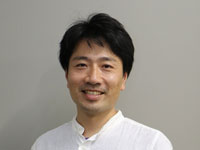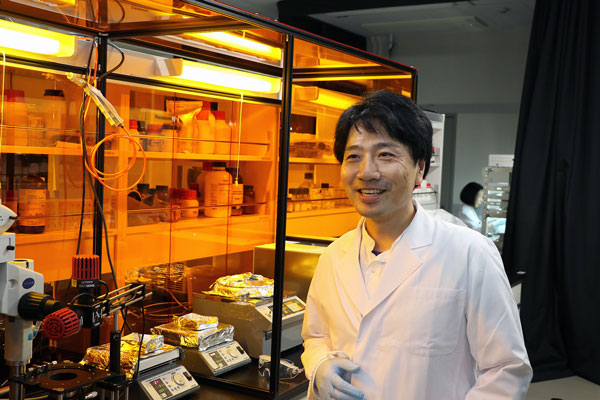Dec. 20, 2019
The dynamics of single cells
Hirofumi Shintaku, RIKEN Hakubi Research Team Leader

Microfluidics RIKEN Hakubi Research Team, Cluster for Pioneering Research
Please describe your role at RIKEN.
Please briefly describe your current research.
In 2014, I found that an electric field can selectively break down the plasma membrane of eukaryotic cells while retaining the integrity of nuclei membrane. This discovery led me to develop a new approach to separating cytoplasmic contents from nuclear components in single cells. My team exploits this approach to study localization and regulation of transcript abundance across the nuclear membrane in single cells. We are now working to extend the approach to do sequencing-free characterization of single cells. I believe this series of studies will contribute to understanding the most basic elements of life.

What has been the most interesting discovery in your field in the last few years?
Single cells are known to be unique, even if they are from a same population. This diversity is important to complex biological functions and hierarchical structures. However, until recently we had no means to explore these differences in more depth, because of limitations in throughput and sensitivity of measurements. During the last decade, the field of microfluidics has offered number of disruptive technologies that allowed researchers to characterize single cells at unprecedented resolution and throughput.
How did you become interested in your current field of research?
I started my research career as a mechanical engineer with an emphasis on microelectromechanical systems and fluid dynamics. I have always been passionate about applying new technologies to solve biological questions. Ultimately, I would like to describe single cells with a physical model, and develop a mathematical description that predicts the future fate of single cells.
What excites you the most about your current research?
We are now putting our efforts into developing a sequencing-free approach to understand new molecular mechanisms within single cells. This approach will complement state-of-the-art sequencing technology to reveal dynamics and real instantaneous snapshots of single cells—I’m really excited about this project, both as an engineer and as a scientist.
How has being at RIKEN helped your research?
RIKEN is a research institute that embraces scientists from many fields. The Cluster for Pioneering Research, which I belong to, is a real melting pot of all kinds of scientists. I’ve noticed a wider variety of people expressing interest in my work since I moved to RIKEN.
What is the best thing about working at RIKEN?
Great staff. They think of researchers first—which allows us to focus on the science. My team started from scratch, and so we renovated our research space. Although I knew zero about the basics like air conditioning, lighting, water supply, etc., we accomplished the renovations thanks to the support of RIKEN staff.
